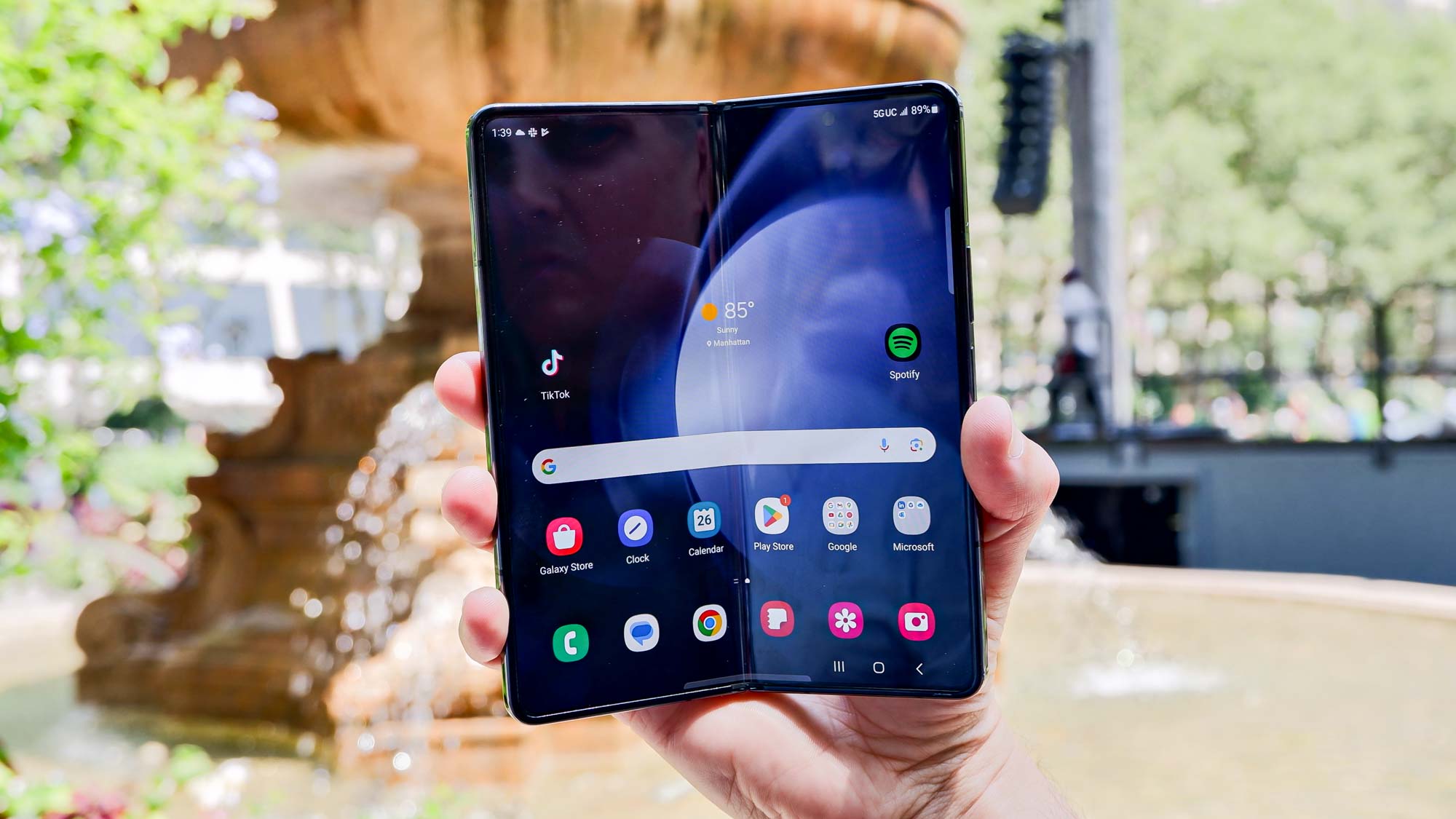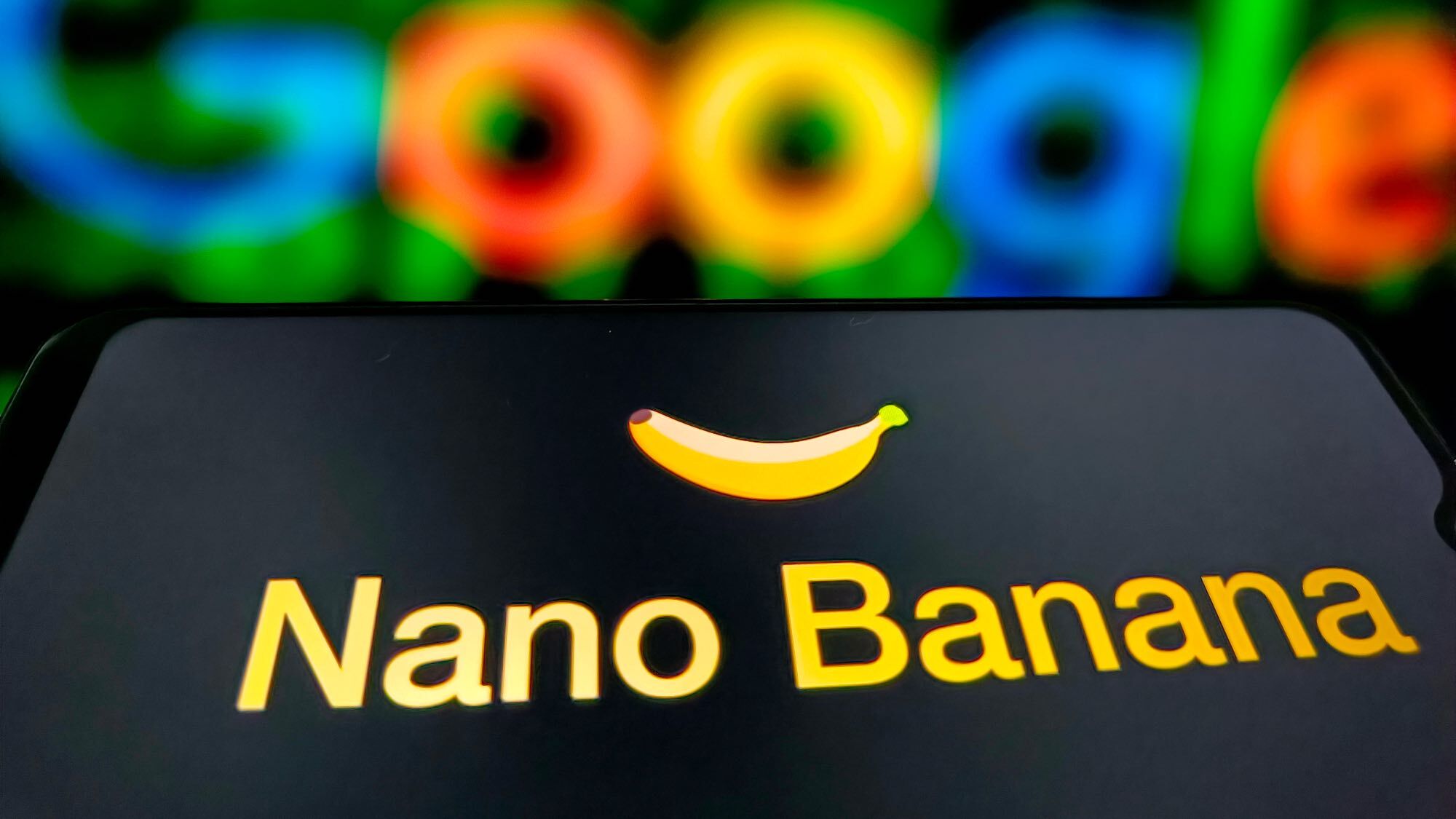I asked Samsung’s mobile VP about a cheaper Galaxy Z Fold FE — here’s the answer
How long until we see more affordable foldables?

Samsung’s latest generation of foldable phones — the Galaxy Z Fold 5 and Galaxy Z Flip 5 — promises refinement in hopes to make the category more approachable than ever.
But with the Galaxy Z Fold 5 and Z Flip 5 starting at $1,799 and $999 respectively, they don’t come cheap compared to many of the best phones currently on the market. So when I sat down to interview Drew Blackard, vice president of mobile product marketing at Samsung, I had to ask about whether a Galaxy Z Fold FE (or something like it) is in the cards.
Samsung’s FE or “fan edition” product line packs select flagship features in lower-cost devices. With rumors of a Samsung Galaxy S23 FE on the horizon, it seems feasible for the Z series family to receive a similar budget-friendly treatment. Especially if Samsung plans to make foldables 50% of its mobile product mix by 2025. Plus, Samsung’s mobile chief TM Roh said previously on record that the company is, "trying to make a leap in our price positioning."
So, is Samsung truly working on a cheaper foldable? Below, you can see what Blackard had to say about bringing costs down. In the interview, which has been edited for clarity and length, the Samsung exec also talks about this year’s biggest hardware upgrades and the growing competition in the foldable category.
Kate Kozuch: The redesigned hinge on the Z Fold 5 and Z Flip 5 seems like a big deal. Why was that a priority for this generation of devices?
Drew Blackard: When we do a new product, we always want to understand from our current users what they love about the device, different pain points they've had and try to resolve those. And when we think about the hinge specifically, these devices are really about portability and pocket-ability. So we want to make them slimmer and thinner in each generation. By going to what we call a zero-gap hinge, we're able to narrow the device down. That helps from a durability perspective because there's less space for any things in your pocket to get in between the device.
How would you say the latest Z series generation stands compared to where it started in 2019 with the original Fold?
It's kind of crazy, this is our fifth generation foldable. If you think back to where we started, so much has changed. We've really innovated with the cameras, they’re much more of what we would think of as kind of flagship experience. The use cases for foldables have become even better and better at each generation. If you think back to the first Flip, there was a very, very small panel where you could just see the time, basically. And now, you have a full interactive display on the front where you can quickly read notifications, respond to messages and more.
Do you anticipate the Fold and Flip form factors ultimately persevering, or is there a place for a different kind of flexible smartphone in the future?
As a starting point, Flip and Fold form factors are showing that there's a lot of interest. That said, there's continued room for innovation. Samsung at its core is an innovative company and we do incredible work with displays, so we're always looking just form factor wise where things go. I think for the time being, we think we've got a really good breadth of product that attracts a different range of use cases and different users. But we're really excited to see where foldable technology goes in general.
What has Samsung identified as the biggest obstacle to foldable adoption and how are you going about addressing it?
We've identified a couple areas from previous users of where we want to innovate on to make the foldable experience more mainstream. One is the form factor itself. For Fold specifically, we heard that users would like it to be lighter weight so that it's easier to carry around. The second area is durability. We know that many consumers are now aware of foldables, but they might not have touched and used one for the first time. We want to give peace of mind that someone who is going from a solid piece of glass to a flexible display has nothing to worry about.
What is Samsung's strategy for commanding the global market share of foldable smartphones, considering competition from the Google Pixel Fold and Motorola Razr+?
In terms of competition, we really welcome it. Samsung created the foldable category and as new competitors enter, it really just validates that this is a form factor that there's a lot of interest in. We announced last year, we've sold over a million foldables globally, and we think that the more awareness comes to the category, it really puts us in a great position to continue leadership of the category.
Do you think that we'll ever see a Galaxy Z Fold FE or Flip FE to target shoppers on a tighter budget?
Foldables eventually will come down in price. This year, we really focused on resolving the pain points that we saw for our current foldable user base. With Fold, a lot of that had to do with making it slimmer, making it lighter weight, powerful processing. And on Flip, that was driven through the Flex Window and that cover screen experience. So we are focused on continuing to refine the experience. Of course, over time, as the technology evolves, we'll continue to see innovation and hopefully bring it down in price point at a future time.
So the priority first is to refine the product, and then from there, we can talk about bringing the price down?
Absolutely, because the first thing’s first, we need to make sure that it's an incredible experience. We want to continue to refine it so that it becomes mainstream in terms of all the use cases that you're doing and, and really the premium aspects of the product. As those get perfected, then we can kind of start thinking about how we broaden out the portfolio.
How do you see the market share splitting between the Z series foldables and S series going forward?
Well, we've got big goals for foldables. Our goal by 2025 is that it’s 50% of our global flagship mix. And at the moment, I would say we're kind of well on our way towards that trajectory.
As we see foldable adoption grow, what do you think that looks like in the future for the smartphone market?
The way I like to think about it is, I have twins that are four and half years old. Just think about your own evolution of the phones you've had over the years, it evolved from maybe not having a phone, to flip type phones, to bar type phones. They're going to go through that same evolution. Whether that be in high school or at some point in college, they're not going to be carrying around a bar type smartphone, it's going to be foldables, it's going to be different form factors. The innovation that we're seeing today is just the starting point and scratching the surface of what's going to be a huge new wave of different form factors.
Get instant access to breaking news, the hottest reviews, great deals and helpful tips.

Kate Kozuch is the managing editor of social and video at Tom’s Guide. She writes about smartwatches, TVs, audio devices, and some cooking appliances, too. Kate appears on Fox News to talk tech trends and runs the Tom's Guide TikTok account, which you should be following if you don't already. When she’s not filming tech videos, you can find her taking up a new sport, mastering the NYT Crossword or channeling her inner celebrity chef.
